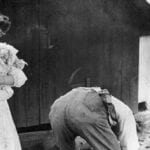 Creepy
Creepy  Creepy
Creepy  Technology
Technology 10 Scientific Breakthroughs of 2025 That’ll Change Everything
 Our World
Our World 10 Ways Icelandic Culture Makes Other Countries Look Boring
 Misconceptions
Misconceptions 10 Common Misconceptions About the Victorian Era
 Mysteries
Mysteries 10 Strange Unexplained Mysteries of 2025
 Miscellaneous
Miscellaneous 10 of History’s Most Bell-Ringing Finishing Moves
 History
History 10 Great Escapes That Ended Right Back in Captivity
 Weird Stuff
Weird Stuff 10 Fascinating Things You Might Not Know About Spiders
 Food
Food 10 Everyday Foods You Didn’t Know Were Invented by the U.S. Military
 History
History 10 Odd Things Colonial Americans Kept at Home
 Creepy
Creepy 10 More Representations of Death from Myth, Legend, and Folktale
 Technology
Technology 10 Scientific Breakthroughs of 2025 That’ll Change Everything
 Our World
Our World 10 Ways Icelandic Culture Makes Other Countries Look Boring
Who's Behind Listverse?

Jamie Frater
Head Editor
Jamie founded Listverse due to an insatiable desire to share fascinating, obscure, and bizarre facts. He has been a guest speaker on numerous national radio and television stations and is a five time published author.
More About Us Misconceptions
Misconceptions 10 Common Misconceptions About the Victorian Era
 Mysteries
Mysteries 10 Strange Unexplained Mysteries of 2025
 Miscellaneous
Miscellaneous 10 of History’s Most Bell-Ringing Finishing Moves
 History
History 10 Great Escapes That Ended Right Back in Captivity
 Weird Stuff
Weird Stuff 10 Fascinating Things You Might Not Know About Spiders
 Food
Food 10 Everyday Foods You Didn’t Know Were Invented by the U.S. Military
 History
History 10 Odd Things Colonial Americans Kept at Home
10 History Myths Still Taught As Fact
To the victor go the spoils . . . and the privilege of writing their own history, most frequently in glowing terms. But, alas, this has all too often resulted in misconceptions, myths, and outright lies being taught and believed by future generations.
History seldom lets truth get in the way of a good story. The official versions of the entries below might have become widely believed because they were more popular, but they don’t represent what actually happened.
10 Pavlov Rang Bells For Dogs
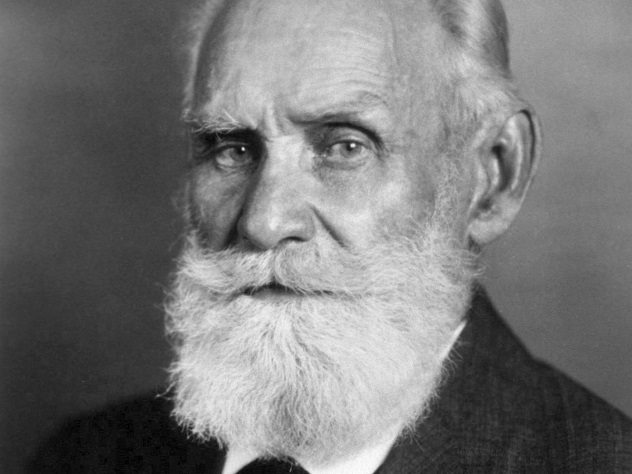
Russian scientist Ivan Pavlov’s experiments into classical conditioning are among the most famous scientific tests ever devised. By ringing a bell before serving his dogs food, he created a link between the two in their minds. Subsequently, the dogs would start reacting to the sound of the bell alone by salivating, thus being conditioned to react to a neutral event otherwise unrelated to food.
In reality, Pavlov was a physiologist, not a psychologist, and his original experiment was a little different. Pavlov was much more interested in the mechanics of the body. Specifically, he wanted to examine the secretions triggered in the body by eating. He developed a technique of “sham” feeding. Pavlov would remove the esophagus of the dog and cut an opening in its throat.[1] That way, the food would fall out and never reach the rest of the digestive system, but it would still trigger the body’s responses. Afterward, he would collect secretions like saliva and gastric juices and analyze them. Then he would take another dog, move the opening farther down the digestive system, and repeat the process. It was this work that won Pavlov a Nobel Prize in 1904, not classical conditioning.
The famous test was an offshoot Pavlov created when he noticed increased saliva production when dogs saw his lab coat–wearing assistants entering the room, even when they didn’t have food. Eventually, this evolved into its own experiment, but bells where seldom used, if at all. Pavlov tried a variety of stimuli, including electric shocks, buzzers, and harmoniums, but he typically preferred a metronome.
9 Nobody Expected The Spanish Inquisition
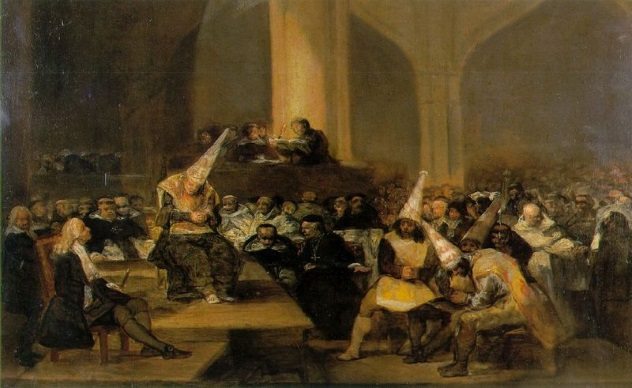
Throughout its almost 400-year span, the Spanish Inquisition was responsible for some reprehensible acts. It wasn’t until 1970 that the Inquisition became funny thanks to the efforts of Monty Python, who boldly exclaimed that, “Nobody expects the Spanish Inquisition.”
While hilarious, the proclamation wasn’t factually accurate. In fact, most people expected the Spanish Inquisition because the inquisitors announced their presence and their intention to weed out heretics and gave people a few weeks or more to confess their sins. When the Inquisition started a campaign in a new location, they would usually attend Sunday mass. Here, they would issue an Edict of Grace or an Edict of Faith, inviting people to denounce themselves or others they believed to be heretics. They usually had around 30 or 40 days to do this.[2]
Many people came to confess willingly, hoping to save themselves. However, they soon found out that self-denunciation only typically spared them the harshest punishment, which was death. Since heresy was considered not only a sin but also a crime, the penitents were still subjected to a public trial. They had to endure lesser punishments for heresy, such as imprisonment or confiscation of property. They also had to denounce all other people involved in the heresy, including family members. Later on, the Inquisition obligated faithful to denounce all suspected heretics under threat of excommunication.
8 Feminists Burned Bras In Protest

The 1960s were a turbulent time in the US. Counterculture was going strong as more and more people were rejecting societal norms. The feminist movement was particularly powerful at that time. Even today, we are left with the striking image of liberated women casting off the shackles of oppression by symbolically burning their bras. The only problem is that 1960s feminists never burned bras, and some even argue that the image was perpetuated by opponents of feminism.
The infamous rally in question occurred at the 1969 Miss America pageant (which was held in September 1968). Protesters organized a mock pageant outside the Boardwalk Hall, where the real competition was taking place. They awarded the crown to a sheep to symbolize women being judged like livestock and also threw a number of feminine products in a garbage can. This included bras but also girdles, corsets, Playboy magazines, makeup, curlers, and high-heeled shoes.[3] The organizers considered setting them on fire, but they couldn’t get a permit.
The protest received widespread coverage, including from New York Post reporter Lindsy Van Gelder, who wrote a piece titled “Bra Burners and Miss America.” In the article, she drew comparisons between feminist activists and young men burning their draft cards in protest of the Vietnam War, and the myth was born. In a later interview, she lamented that she would be remembered for “inventing” bra burning.
7 US Presidents Had a Red Phone to Russia

The Cuban Missile Crisis was probably the closest humanity has ever come to full-scale nuclear war. In October 1962, the Soviet Union deployed nuclear missiles to Cuba in response to the United States doing the same in Italy and Turkey. This was followed by a tense standoff in which the two nuclear powers almost declared war on each other.
Following the crisis, poor communication between the US and the Soviet Union was considered one of the factors that worsened the situation considerably. Messages from one side to the other took almost six hours to receive and decode. Both parties subsequently decided that a better line of communication was necessary.
That is how the red phone came to be. According to myth, this phone, found in the White House, was a direct line between the US president and the Kremlin. It was popularized in the movies Dr. Strangelove and Fail Safe. Later, it was used prominently by Walter Mondale during the 1984 presidential campaign in commercials against Gary Hart and Ronald Reagan.
The real “hotline” was installed in 1963, but there was never a red telephone involved, simply because the technology at the time made it impossible. The original system used teletype and radiotelegraph equipment. It still had to travel from Washington to London to Copenhagen to Stockholm to Helsinki and finally to Moscow. The first message sent over the hotline was, “The quick brown fox jumped over the lazy dog’s back 1234567890.”[4]
6 Medieval Armor Rendered Knights Immobile
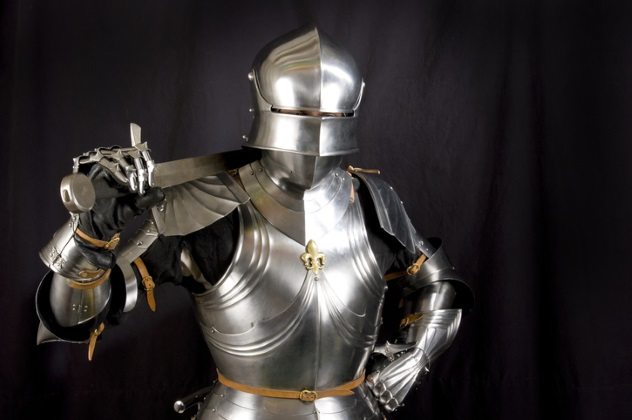
One of the most famous images from history is that of the medieval knight, clad in shining armor, swinging his sword around. While most can agree the armor looked impressive, it did hurt the knight’s speed and mobility. In fact, many believe that it turned the wearer into a lumbering buffoon who was almost as helpless as a turtle on its back.
Historians have been aware for a while that armored knights were more nimble than most people would assume. However, it wasn’t until recent years that others thought to finally put the medieval armor to the test. A team at the University of Geneva led by Daniel Jaquet dressed test subjects in armor replicas and had them replicate the range of motions pictured in various paintings and tapestries. This included climbing a ladder, rolling, jumping, and various sword swings. None of them were incredibly difficult to pull off, even for someone who wasn’t a real knight.
The team went a step further and replicated the training regimen of 15th-century French knight Jean Le Maingre, aka Boucicaut. He was not only famed for his strength and stamina but also took the trouble to write down the activities he performed while wearing his full-plated armor. They included jumping on a horse, running for an extended length of time, scaling walls, and climbing the underside of a ladder.[5] Jaquet’s test subject managed to replicate the feats without too much difficulty and also added a few somersaults and cartwheels for extra style points.
5 Napoleon Destroyed The Nose Of The Sphinx

The Great Sphinx of Giza is one of the most famous landmarks of the ancient world. It is immediately recognizable thanks to its most distinguishing feature: the missing nose. At one point in time, people started to blame Napoleon for the destroyed facial feature. According to the tale, the French emperor had his men blast the nose off with cannon fire.
We’re not sure exactly when or why this story first appeared, but it is easily proven false. The Brooklyn Museum has a sketch of the Sphinx published in 1757.[6] It belonged to Danish explorer Frederic Louis Norden from his 1738 journey to Egypt and clearly depicts the Sphinx without its nose. This happened three decades before Napoleon was born.
The story is also debunked by eminent archaeologist Mark Lehner, who said that the Sphinx’s face showed signs of rods or chisels being hammered into the nose and then being used to pry it off. As to the real perpetrator, the only written proof we have comes courtesy of 15th-century Egyptian historian al-Maqrizi. He wrote that a Sufi Muslim named Muhammad Sa’im al-Dahr destroyed the nose because he was angered by peasants praying to the Sphinx for a good harvest.
4 Wall Street Jumpers Of 1929

The Wall Street Crash of 1929 was devastating for the Western economy. Having lost everything, many Wall Street bankers and stockbrokers decided to end it all by jumping from windows and rooftops. One apocryphal story said that it was so bad that when guests would check into hotels in New York, the receptionists began asking if it was for sleeping or jumping.
The story of the Wall Street suicides has been often repeated, and plenty of people believe it today, but one study debunked it as far back as the 1980s. The overall suicide rate climbed and reached an all-time high in 1932 of 17.4 out of 100,000 Americans. However, the rate had already been steadily climbing for years prior to the crash during the booming 1920s.
Between October 24, 1929, aka Black Tuesday, and the end of the year, The New York Times reported 100 suicides and suicide attempts in the city.[7] Only eight killed themselves by jumping off buildings or bridges. The number of people who jumped on Wall Street because they lost everything in the crash was just two. In fact, the suicide rate in the weeks immediately following the crash was lower than it was during the summer. While undoubtedly many people committed suicide due to the financial crisis, very few did it by jumping, and even fewer did it on Wall Street.
3 Polish Horses Vs German Tanks
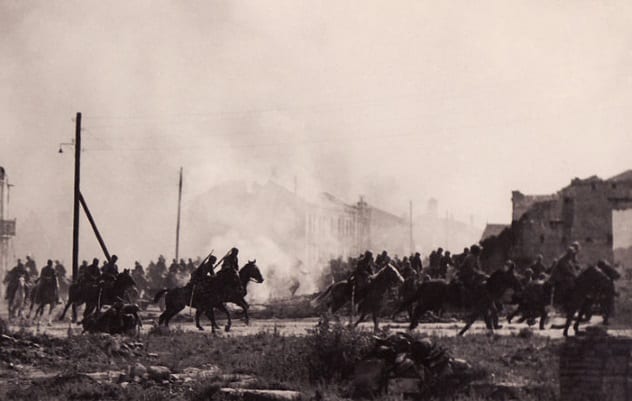
One of the many long-lasting notions to come out of World War II was the inability of underprepared Polish forces to face the might of the German Wehrmacht. Specifically, the idea is reinforced by the image of Polish cavalry armed with lances desperately and hopelessly attacking Panzer tanks.
It’s true that Poland had multiple cavalry regiments during World War II, as did many other nations. It’s also true that there was a battle known as the Charge at Krojanty, where Polish cavalrymen called Pomeranian Uhlans engaged German armored vehicles. The rest of it, however, is mostly propaganda spread first by the Nazis and later by the Soviets.[8]
For starters, the Polish cavalry didn’t march into battle in World War II armed with lances. They had rifles. And, technically, there were also no tanks involved in the charge, since the German units were actually armored cars used for reconnaissance.
Most importantly, though, the Polish troops never went into battle expecting to fight a motorized army. German infantry had just breached a Polish defense line, so the cavalry had to attack and slow them enough for the rest of the Polish forces to fall back. Unbeknownst to them, Germany also had armored cars in the area, which were able to join the fight and tip the scales in their favor. While the Polish Uhlans were forced to retreat under heavy gunfire, they had accomplished their goal of forcing the German army to regroup and delay its advance.
2 The US Wanted To Go To The Moon

When the Soviet Union launched Sputnik 1 into space in 1957, it triggered a reactionary response from the United States, officially starting the Space Race. Neither Eisenhower nor JFK truly wanted this, due to the huge strain it would put on the country’s resources. Kennedy even advocated for a joint mission to the Moon with the Soviet Union. Despite the huge cost, at least the space program enjoyed enthusiastic support from the American people, right?
Actually, only about half of Americans were in favor of lunar exploration, even at the height of the Apollo missions. Polls showed that public approval toward the space program stayed under 50 percent for most of the 1960s. It was also among the first things they thought should be cut from the federal budget. It only reached a peak approval rate of 53 percent after Neil Armstrong took his “giant leap for mankind.”[9]
This would suggest that political reasons were the main factors that committed the United States to the Space Race, not public demand. One reason why people disapproved of the space program was undoubtedly the public’s misperceived notion of NASA’s budget. Polls show that Americans believe NASA receives up to 22 percent of the federal budget. In truth, it actually only ever reached 4.3 percent at the height of the Space Race and usually stays under one percent.
1 Nero Threw Christians To The Lions At The Colosseum
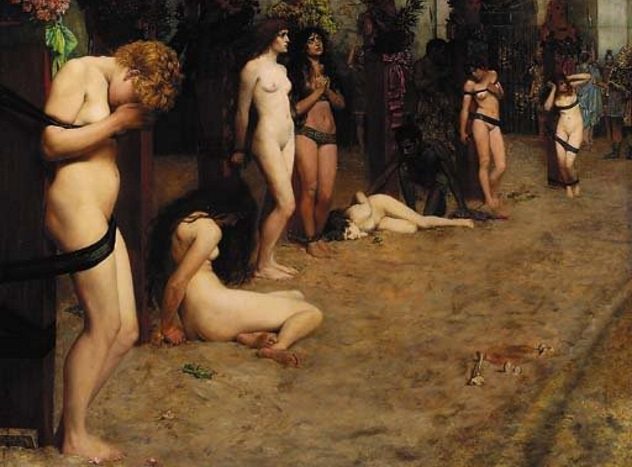
There were a lot of crazy shows Romans saw at the Colosseum. The ones best remembered today are the gladiator fights and Christians being thrown to the lions. However, there is no reliable evidence to suggest that Christians were ever executed in the Colosseum, by lions or otherwise.[10] The idea was spread mostly by Renaissance artists and writers.
Just to be clear, there have been Christians sentenced to damnatio ad bestias (condemnation to beasts). There have also been people who were killed by animals in the Colosseum. There just is no reliable proof that the two overlapped.
We know for a fact that Nero never did this for a simple reason: The Colosseum didn’t exist when he was emperor. Nero reigned until AD 68, and construction of the Colosseum didn’t start until four years later under Vespasian. Nero is often the emperor most associated with the act because, according to contemporary historians, he was the first Roman emperor to persecute Christians. Tacitus said that Nero blamed Christians for the Great Fire of Rome in 64 AD. However, Tacitus wrote that Nero had Christians killed by burning, crucifixion, or being mauled by dogs. He makes no mention of lions.
For more historical lies, check out 10 Myths About Historical Figures We Still Believe and Top 10 Common Historical Myths.


